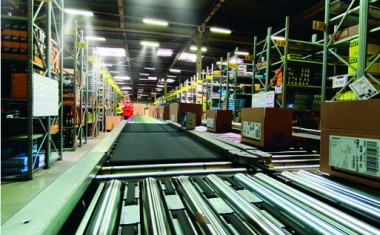
Despite disruptions, global aftersales shows resilience and continues to grow

The global aftermarket ecosystem experienced a soft landing in 2023 after a rapid start. Economic disruptions due to persistent cost inflation and geopolitical instability have created an uncertain outlook for 2024, requiring players in the aftermarket to navigate carefully. Effective management becomes challenging as the entire automotive industry prepares for a dual technological change, emphasising the need for agility.
While the independent aftermarket (IAM) business showed strength in the first half of 2023, it faced a slowdown in the latter part of the year due to a global economic downturn. Challenges include price inflation benefiting the entire value chain, cost inflation (especially in energy costs, which are challenging to pass on), and a significant increase in interest rates by four points in a year. These unpredictable increases have affected logistics, parts, and inventory costs, impacting the global ecosystem’s ability to invest. These challenges arise at a time when manufacturers and distributors need to invest in adapting to emerging technologies such as electrification, connectivity, and digitalisation. The aftermarket sector remains resilient but requires adaptability to navigate the uncertainties ahead.
Variable growth rates
This promising yet fragile activity has not established itself uniformly across the globe. European markets remain dynamic, while the USA experiences ongoing challenges. In Asia, China faces difficulties in recovery due to its delayed post-Covid exit, whereas Japan and India show positive momentum. Sub-Saharan Africa, heavily influenced by low-cost Chinese equipment manufacturers, remains a challenging market for Western manufacturers compared to their agile Asian counter-parts. Finally, the Middle East, particularly the Gulf countries with their expanding fleets, represents a future El Dorado for premium manufacturers.
In total, according to the McKinsey research institute, by 2030, the global aftermarket (including parts and services, tyres included, at retail prices) will be worth €1,196 billion. This includes €337 billion generated by North American markets, €295 billion by Euro- pean markets, and €233 billion for China alone.
The (electric) sword of Damocles
But let’s not be mistaken. This momentum will still be largely driven by ICE technologies. A promising base for independent spare parts, especially as cars are expected to continue aging. This provides equipment manufacturers, distributors, and repairers with the time to transition to electric vehicles. While already in progress in China, Europe (primarily Northern), and Japan, electrification is gaining interest in India and the Gulf countries but remains challenging in the USA. The shift to an all-electric fleet will, therefore, not happen as quickly as anticipated by electric vehicle advocates—politicians, manufacturers, investors, and analysts. Even the most pro-electric manufacturers pragmatically observe that consumers are far from being massively inclined toward Battery Electric Vehicles (BEVs), let alone ready to make the move. No one honestly believes that the transition away from ICE cars will happen without passing through a significant hybrid phase. The evolution has started but a revolution may not materialise as the existing vehicle stock will only evolve slowly.
Retrouvez la version en français : Bousculée mais résistante, l’après-vente mondiale maintient sa croissance






